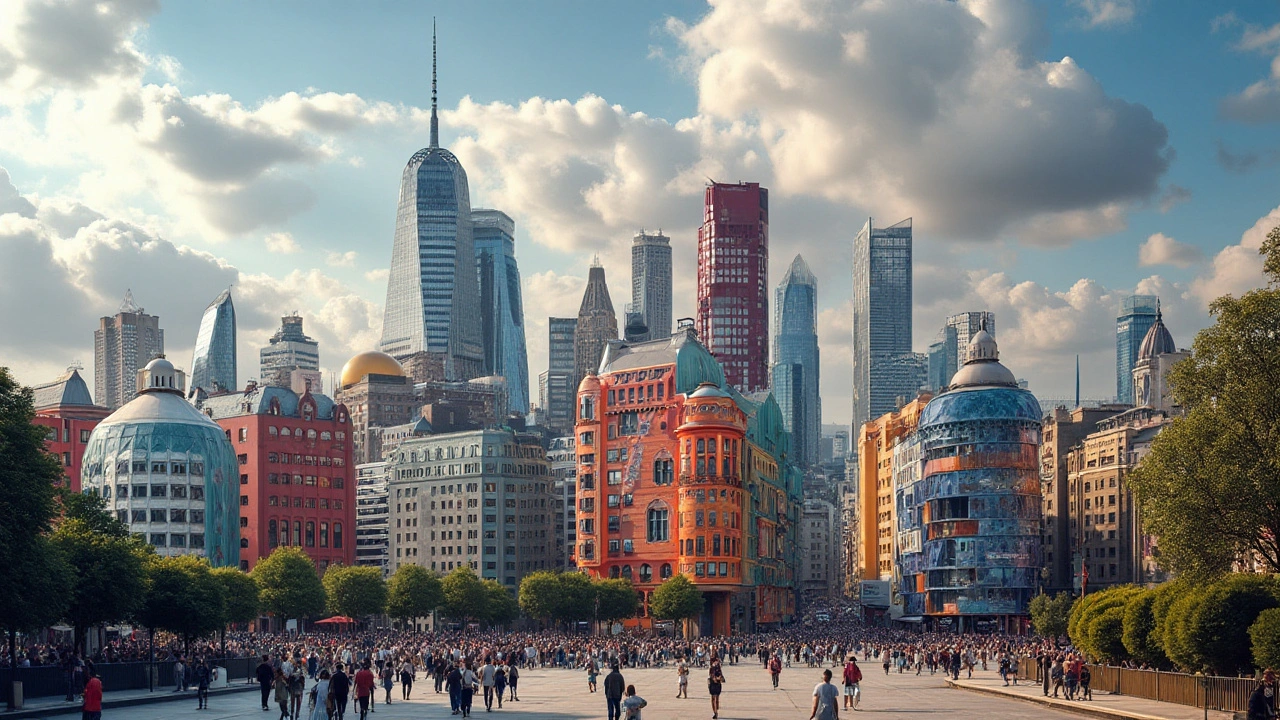Postmodern architecture has significantly shaped urban design, offering a blend of styles, forms, and historical references that defy the norms of traditional architecture. This movement, emerging in the latter half of the 20th century, challenges the rigidity and uniformity of modernism by embracing complexity and contradiction. As cities evolve, postmodern buildings bring diversity and creativity, transforming skylines with character and cultural resonance. This article delves into why postmodern architecture is crucial for future urban landscapes, exploring its impact on design philosophy and community identity.
City Innovation: How Design Shapes Modern Urban Life
What makes a city feel modern? It isn’t just shiny buildings or new transit lines. City innovation is how design, technology, and history mix to change how people live, work, and move. You’ll see it in a renovated square, a smart transit stop, or a bold skyline that borrows old ideas and pushes them forward.
How to spot innovation in your city
Look for places where function meets surprise. A train station that doubles as a market, a façade that adapts to sun and shade, or a public plaza that invites both concerts and morning markets—those are signs of real innovation. Styles like High-Tech architecture show themselves through visible structure and glass, while Neo-Futurism brings flowing forms and tech-driven materials. But innovation isn’t only new forms—Beaux-Arts planning gave us wide boulevards and civic hubs that still shape city life today.
Check details: are older buildings reused instead of torn down? Adaptive reuse—turning an old factory into offices or apartments—saves resources and keeps character. When a city mixes preserved Georgian or Renaissance buildings with bold new projects, it’s balancing history with fresh ideas.
Design moves that actually change cities
Transit-first planning matters. Cities that prioritize fast trams, bike lanes, and walkable streets see better local business and less traffic. Look at how Roman engineering influenced durable public works for centuries—modern cities borrow that sense of long-term infrastructure. High-Tech and Constructivist ideas pushed structure and systems into the open, making buildings do more and mean more to the public.
Public space design is another lever. Small changes—adding trees, seating, and lighting—can transform an empty lot into a neighborhood hub. Beaux-Arts-era boulevards and plazas taught planners how public spaces create civic life; today’s designers mix those lessons with smart sensors and flexible layouts to keep spaces active day and night.
Want to use these ideas where you live? Start small: support projects that reuse buildings, push for protected bike lanes, or volunteer in local design reviews. If you’re renovating, borrow details from Mediterranean Revival or Craftsman styles that improve comfort without huge cost—arched windows for light, deep eaves for shade, and materials that age well.
Finally, notice the stories buildings tell. From Colonial façades to Neo-Futurist towers, each style reflects an idea about what cities should be. Spotting those ideas helps you understand options for the future—and makes it easier to back the design changes that improve daily life. Cities change by small, practical moves, not just grand visions. Keep your eyes open, and you’ll spot innovation everywhere.

